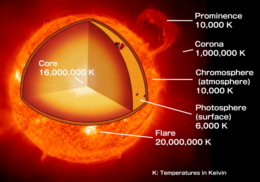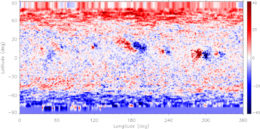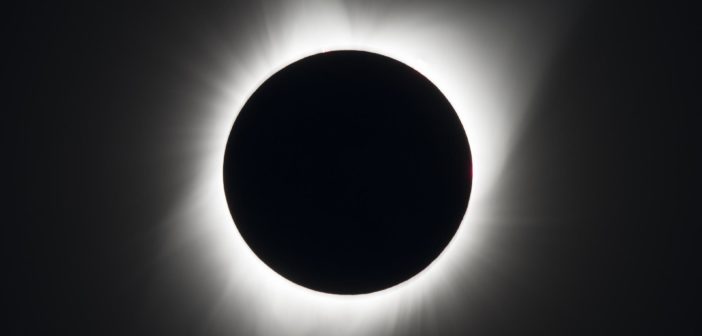How does the temperature of the solar atmosphere leap from 6000K to more than a million kelvin over a distance equal to just 0.3% of the Sun’s radius? Today’s article explores the coronal heating conundrum with a model that has earned its “awesome” moniker.
Heating Up the Solar Atmosphere

The temperatures of different layers of the Sun. The Sun’s atmosphere gets progressively warmer with increasing distance from the core, from the photosphere at 6000K, to the chromosphere at 10000K, to the corona at 1 million kelvin. [ISAS/JAXA]
Solar physicists have identified a wide array of processes that could potentially heat the corona. Undulating plasma waves that carry energy outward from the dense solar surface to the tenuous corona are one potential source of heating, but it’s unclear when or where this process might dominate over other heating methods. In a new publication led by Tong Shi (University of Michigan), a team of scientists has explored coronal heating by plasma waves with a high-resolution solar model.

The team elected to model a solar active region that appeared on July 13, 2018. The active region can be identified by the paired dark red and blue spots at a longitude of approximately 300. The color scale shows the strength and direction of the magnetic field in the radial direction in Gauss. Click to enlarge. [Shi et al. 2022]
Wave Simulations
The Alfvén Wave Solar Model (AWSoM) simulates heat transport by Alfvén waves — a type of plasma wave in which oscillating ions and magnetic fields pass energy back and forth. AWSoM has been used to model a variety of solar phenomena, including predicting the conditions the Parker Solar Probe would experience on its first close approach to the Sun.
Now, Shi and collaborators have applied AWSoM to a solar active region for the first time. AWSoM has performed well in its previous applications, but reproducing the conditions in and around an active region — an area of the Sun’s surface with particularly strong magnetic fields — is a critical test. Since AWSoM simulates the entire Sun rather than just a small area, attempting to capture the fine details of a complex active region promised to push the boundaries of AWSoM’s computational abilities.
From Global to Local

Extreme-ultraviolet and X-ray images of the Sun from the Solar Dynamics Observatory (left column) and corresponding images based on model output (center and right columns). [Shi et al. 2022]
The authors estimate that by incorporating more levels of refinement in their model grid, they achieved their highest resolution ever, even approaching the levels seen in ultra-detailed images from spacecraft like the Solar Dynamics Observatory and Hinode. However, even AWSoM’s unparalleled resolution may not be sufficient to understand the physics of the transition region — a narrow range of altitudes between the solar surface and the corona over which the temperature abruptly increases. With further development, AWSoM should allow us to refine our understanding of coronal heating even more.
Citation
“AWSoM Magnetohydrodynamic Simulation of a Solar Active Region with Realistic Spectral Synthesis,” Tong Shi et al 2022 ApJ 928 34. doi:10.3847/1538-4357/ac52ab

